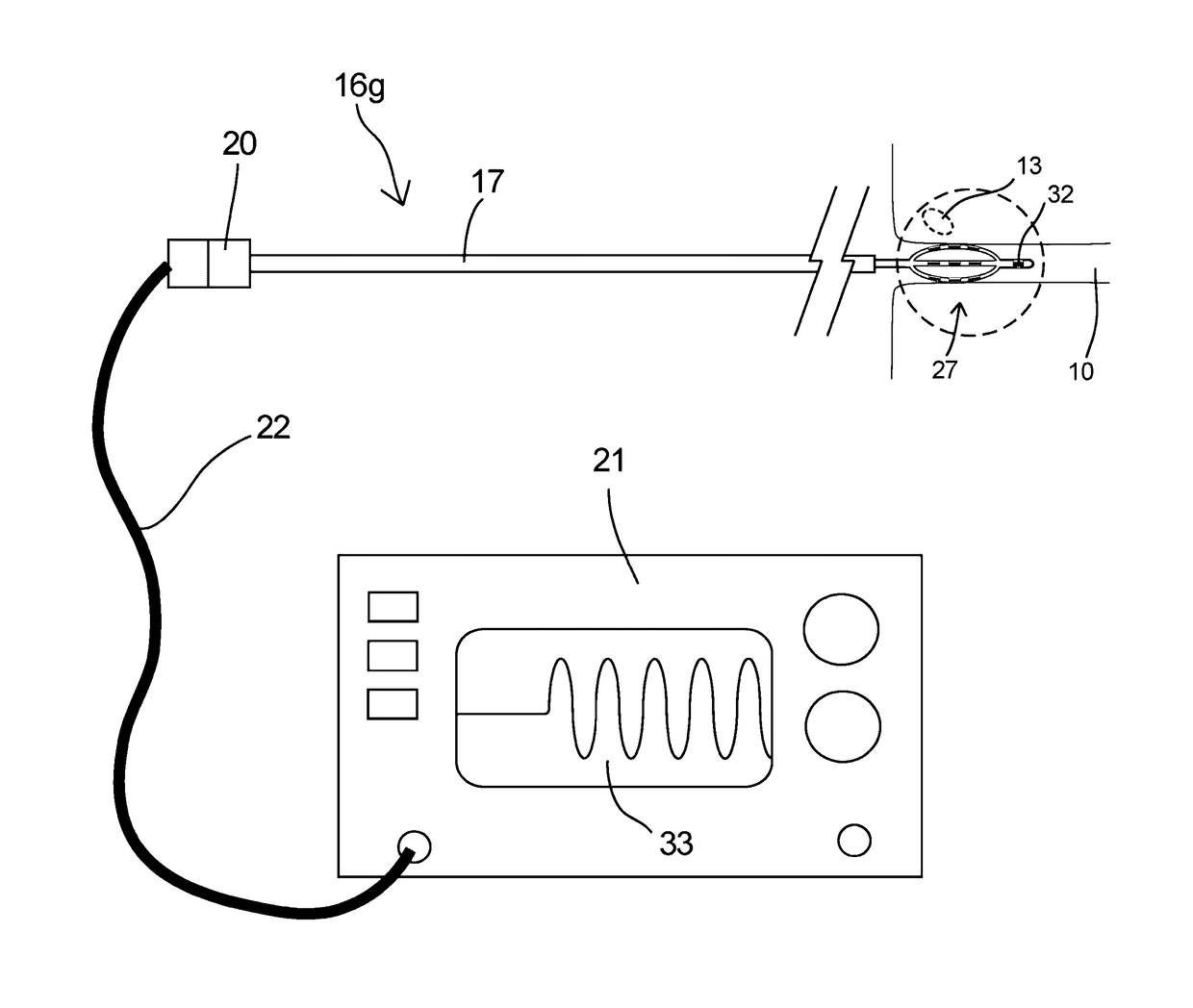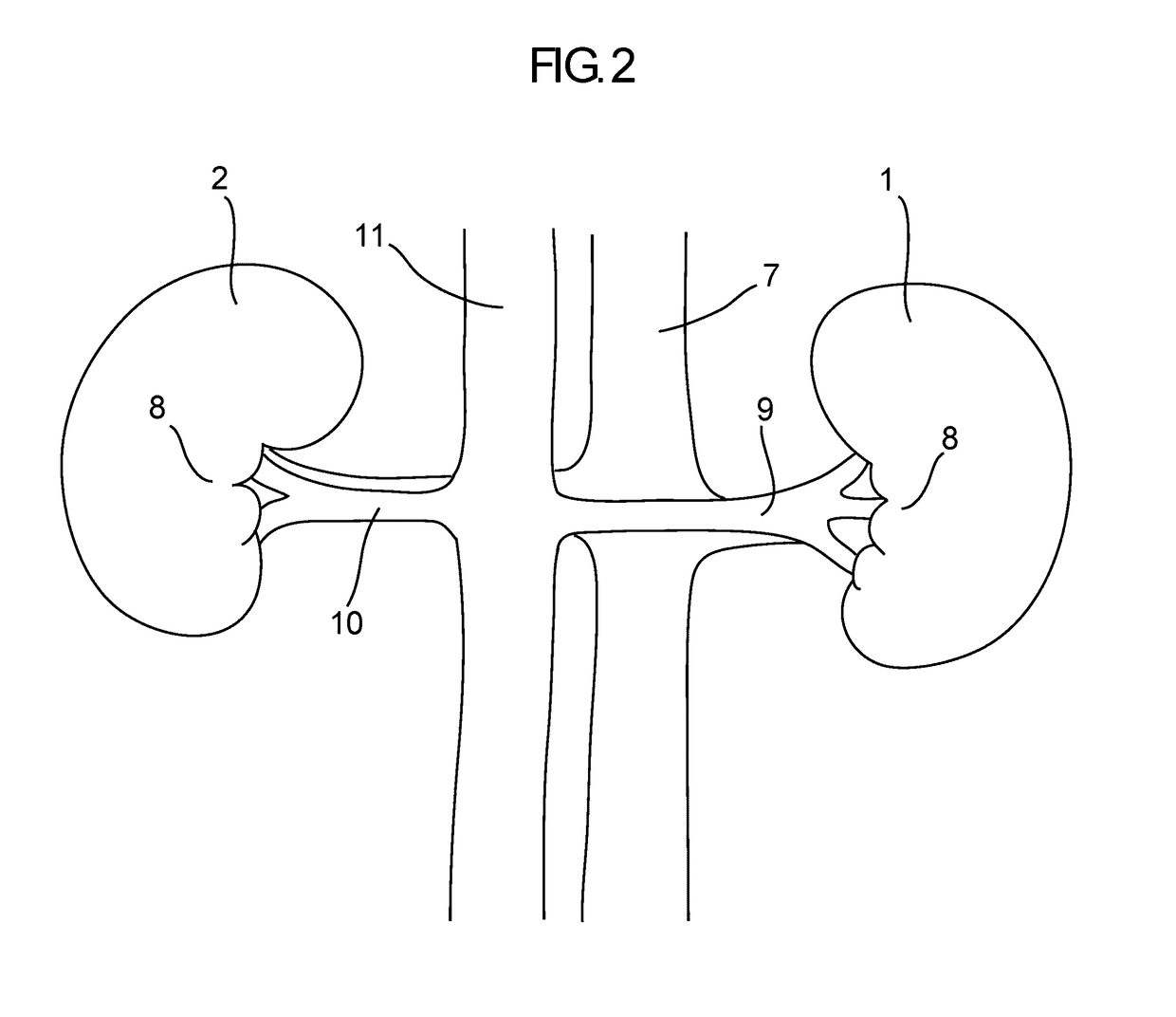Aorticorenal Ganglion Detection
a technology of aorticorenal ganglion and ganglion, which is applied in the direction of catheters, nervous system evaluation, therapy, etc., can solve the problems of affecting affecting the function of the kidney, and reducing or cesing the activity of the kidney nerve involved in the development of hypertension, so as to prevent the shut down of the high impedance electrosurgical generator, reduce the damage to the endothelial tissue, and reduce the damage to the kidney
- Summary
- Abstract
- Description
- Claims
- Application Information
AI Technical Summary
Benefits of technology
Problems solved by technology
Method used
Image
Examples
experiment 1
[0127]Chronic swine study was performed to demonstrate reduction in renal nerve activity after modification of the aorticorenal ganglia. The domestic swine model is an established model for the renal system because the pig renal anatomy, including circulatory and nervous system, is similar to that of humans.
[0128]The procedure involved placing the anesthetized test animal in dorsal recumbency, followed by a 10-cm midline abdominal incision in order to access the renal anatomy. Peritoneum was removed to expose left and right renal artery, vein, aorta and vena cava. Adventitia was stripped from the renal arteries and veins to expose the renal nerve plexus and aorticorenal ganglia. Direct electrical stimulation of the ganglia was performed at 15 volts, 5 Hz and 0.5 msec. pulse duration using a Grass Instruments SD9 Square Pulse Stimulator (Grass Technologies, Warwick, R.I.). Proper identification of the aorticorenal ganglion was confirmed during stimulation by observation of renal arte...
experiment 2
[0130]An acute swine study was performed to evaluate the feasibility of detecting an acute physiological response to percutaneous stimulation of the aorticorenal ganglion and renal nerve tissue. The procedure involved creating percutaneous access to the renal venous and arterial vasculature through a jugular and femoral puncture site of an anesthetized test animal in dorsal recumbency. Guide sheaths used for radiopaque contrast delivery were placed with fluoroscopic guidance in both the left renal vein and left renal artery to perform a baseline nephrogram. FIG. 17 is a frame capture of the baseline nephrogram showing normal intrarenal vessel emptying and kidney perfusion.
[0131]A modified electrophysiology catheter (5 French Marinr™ Ablation Catheter, Medtronic, Minneapolis, Minn.) attached to a Grass Instruments SD9 Square Pulse Stimulator (Grass Technologies, Warwick, R.I.) was percutaneously placed in the left renal vein. Direct stimulation of the renal vein wall was performed at...
experiment 3
Section
[0314]A chronic swine study was performed to demonstrate a reduction in renal nerve activity after percutaneous catheter modification of the aorticorenal ganglia (ARG).
[0315]Experiment 3 was similar to Experiment 1 with the exception that the ARG was modified intravascularly by percutaneous catheter RF ablation at a single site (i.e. Target Location) within the renal artery.
[0316]The study involved three treated and two naïve swine. Urine and blood panel analysis were performed at each stage of the study, pre- / post-treatment and pre-kidney tissue harvest, and nephrograms were performed for the treated swine pre-treatment and pre-kidney tissue harvest. A veterinarian managed assessment of animal health throughout the study based on this data and assured proper pharmacology and diet were applied.
[0317]The procedure involved creating percutaneous access to the renal arterial vasculature through a femoral puncture site of an anesthetized test animal in dorsal recumbency. Guide ca...
PUM
 Login to View More
Login to View More Abstract
Description
Claims
Application Information
 Login to View More
Login to View More - R&D
- Intellectual Property
- Life Sciences
- Materials
- Tech Scout
- Unparalleled Data Quality
- Higher Quality Content
- 60% Fewer Hallucinations
Browse by: Latest US Patents, China's latest patents, Technical Efficacy Thesaurus, Application Domain, Technology Topic, Popular Technical Reports.
© 2025 PatSnap. All rights reserved.Legal|Privacy policy|Modern Slavery Act Transparency Statement|Sitemap|About US| Contact US: help@patsnap.com



